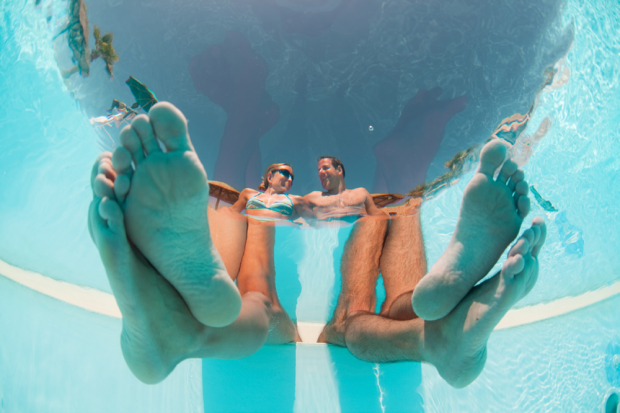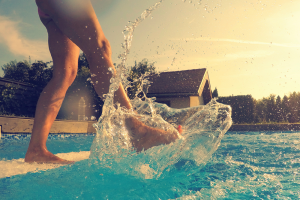Get a Grip Scientists Explain Why Our Skin Gets Pruney And Wrinkly In Water
The answer to why our fingers and toes prune up when they’re in the water for a long time is more than skin deep.
Try as you might, there’s absolutely no way to avoid your hands and feet looking like they belong to a 90-year-old after you've spent long periods of time in a bathtub, swimming pool or other area containing water. But what exactly causes this spontaneous skin wrinkling reflex? Scientists believe they finally have the answer.
The Gripping Tale
Though it’s widely believed that hand and foot wrinkling is the result of being water logged, it’s not water passing through your epidermis that causes the wrinkles and swelling (a fact that was proved in the 1930s when it was found that people with nerve damage in their fingers do not experience swelling or wrinkling). Instead, laboratory tests have confirmed that the wrinkling, caused by vasoconstriction (blood vessels constricting below the skin), serves an evolutionary function: It improves our hand and foot grip on wet or submerged objects, similar to how tire treads channel water so your car or bike can better grip the pavement.
Evolutionary neurobiologist Mark Changizi from 2A1 Labs in Boise, Idaho, was the first to suggest that pruney hands and feet served an evolutionary function, and recent studies prove his theory. In one study, participants were asked to pick up both wet and dry objects like marbles first with normal hands and then with hands that had been soaked in warm water for 30 minutes. The result: The subjects were much faster at picking up the wet marbles when their fingers were wrinkly.
"We have shown that wrinkled fingers give a better grip in wet conditions — it could be working like treads on your car tires, which allow more of the tire to be in contact with the road and gives you a better grip," says Tom Smulders, an evolutionary biologist at Newcastle University, UK, and a co-author of the paper that introduced the study.
Additionally, according to Smulders, it’s possible that wrinkled fingers and toes helped our ancestors balance in streams and rivers when they would gather food from those wet areas.
But then why aren’t our fingers and toes permanently wrinkled? In addition to the fact that the study proved wrinkly hands don’t seem to have an advantage when picking up dry objects, Smulders has two other theories: “Our initial thoughts are that this could diminish the sensitivity in our fingertips or could increase the risk of damage through catching on objects.”
Notice concerning medical entries:
Articles having medical content shall serve exclusively for the purpose of general information. Such articles are not suitable for any (self-) diagnosis and treatment of individual illnesses and medical indications. In particular, they cannot substitute for the examination, advice, or treatment by a licensed physician or pharmacist. No replies to any individual questions shall be effected through the articles.





